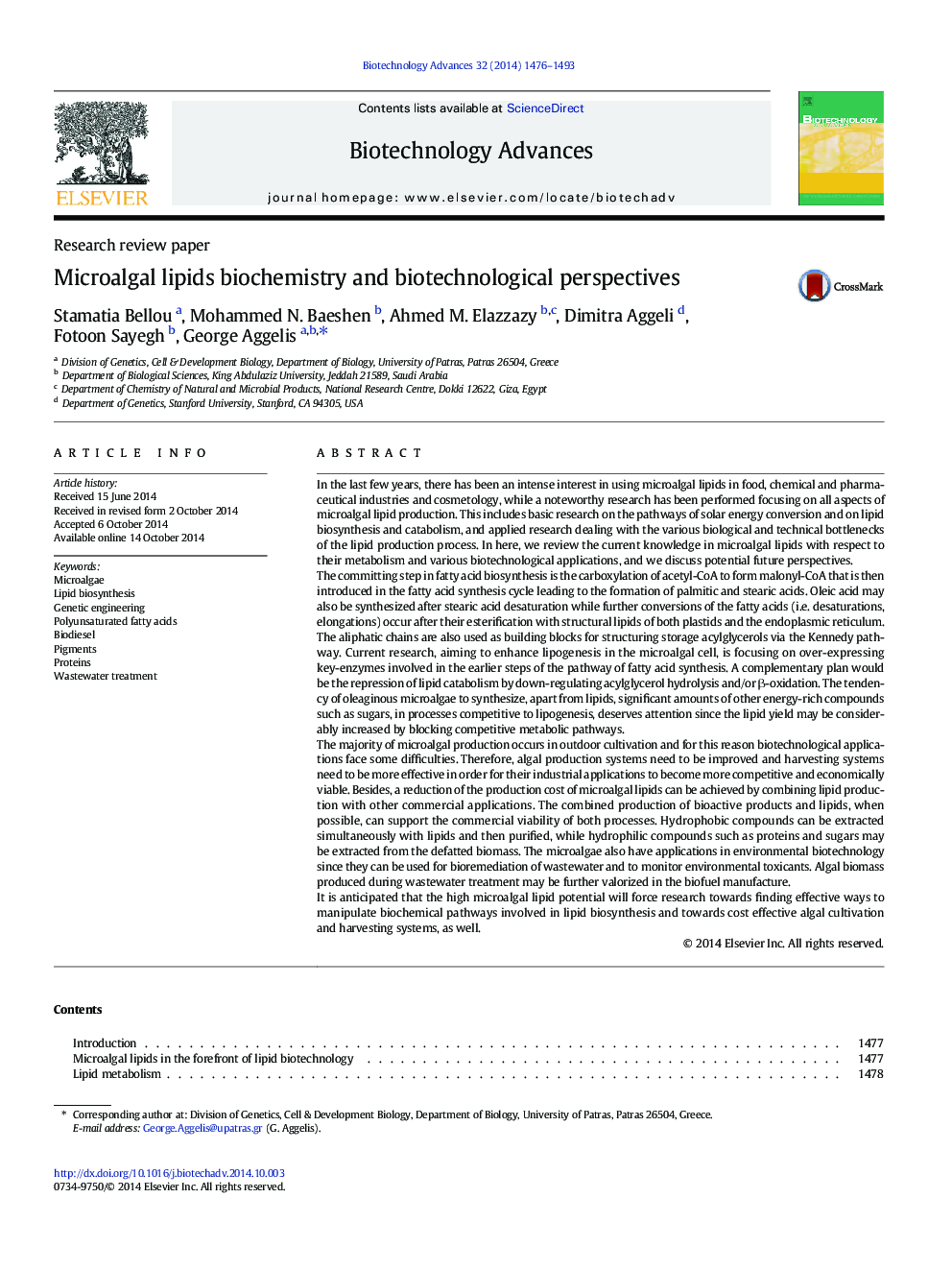| کد مقاله | کد نشریه | سال انتشار | مقاله انگلیسی | نسخه تمام متن |
|---|---|---|---|---|
| 14288 | 1203 | 2014 | 18 صفحه PDF | دانلود رایگان |

In the last few years, there has been an intense interest in using microalgal lipids in food, chemical and pharmaceutical industries and cosmetology, while a noteworthy research has been performed focusing on all aspects of microalgal lipid production. This includes basic research on the pathways of solar energy conversion and on lipid biosynthesis and catabolism, and applied research dealing with the various biological and technical bottlenecks of the lipid production process. In here, we review the current knowledge in microalgal lipids with respect to their metabolism and various biotechnological applications, and we discuss potential future perspectives.The committing step in fatty acid biosynthesis is the carboxylation of acetyl-CoA to form malonyl-CoA that is then introduced in the fatty acid synthesis cycle leading to the formation of palmitic and stearic acids. Oleic acid may also be synthesized after stearic acid desaturation while further conversions of the fatty acids (i.e. desaturations, elongations) occur after their esterification with structural lipids of both plastids and the endoplasmic reticulum. The aliphatic chains are also used as building blocks for structuring storage acylglycerols via the Kennedy pathway. Current research, aiming to enhance lipogenesis in the microalgal cell, is focusing on over-expressing key-enzymes involved in the earlier steps of the pathway of fatty acid synthesis. A complementary plan would be the repression of lipid catabolism by down-regulating acylglycerol hydrolysis and/or β-oxidation. The tendency of oleaginous microalgae to synthesize, apart from lipids, significant amounts of other energy-rich compounds such as sugars, in processes competitive to lipogenesis, deserves attention since the lipid yield may be considerably increased by blocking competitive metabolic pathways.The majority of microalgal production occurs in outdoor cultivation and for this reason biotechnological applications face some difficulties. Therefore, algal production systems need to be improved and harvesting systems need to be more effective in order for their industrial applications to become more competitive and economically viable. Besides, a reduction of the production cost of microalgal lipids can be achieved by combining lipid production with other commercial applications. The combined production of bioactive products and lipids, when possible, can support the commercial viability of both processes. Hydrophobic compounds can be extracted simultaneously with lipids and then purified, while hydrophilic compounds such as proteins and sugars may be extracted from the defatted biomass. The microalgae also have applications in environmental biotechnology since they can be used for bioremediation of wastewater and to monitor environmental toxicants. Algal biomass produced during wastewater treatment may be further valorized in the biofuel manufacture.It is anticipated that the high microalgal lipid potential will force research towards finding effective ways to manipulate biochemical pathways involved in lipid biosynthesis and towards cost effective algal cultivation and harvesting systems, as well.
Journal: Biotechnology Advances - Volume 32, Issue 8, December 2014, Pages 1476–1493